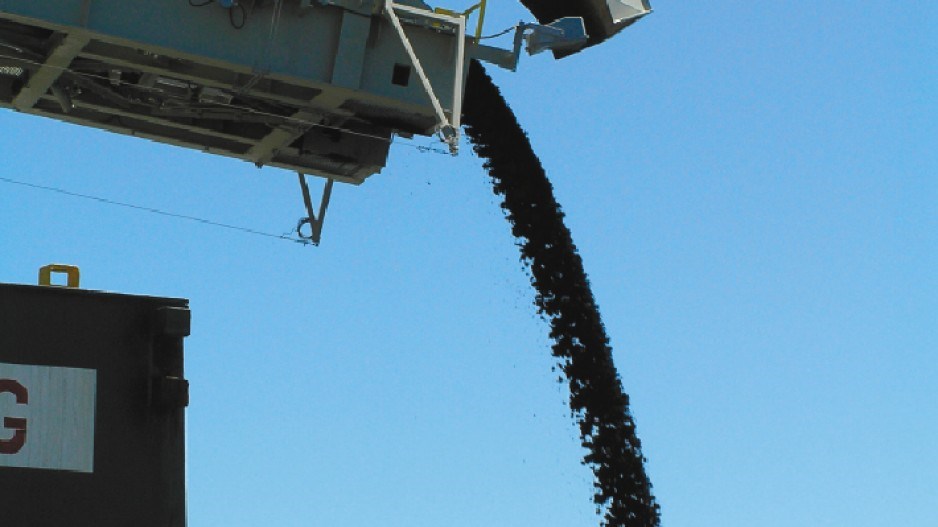The only underground coal mine in British Columbia has been awarded the green light for an expansion that will bring much-needed jobs to the Vancouver Island town of Campbell River. But further south in the Comox Valley a second underground mine is waiting environmental approval in the face of fierce local resistance.
Campbell River lost its biggest private-sector employee two years ago when Catalyst Corp. shut down the Elk Falls pulp mill, idling more than 350 workers. A bid by the Campbell River First Nations to launch a publicly funded $16 million cruise ship terminal was closed in 2009 after attracting only one cruise ship that year.
Now the area’s economic hopes are partly pinned on the Quinsam Mine, which was awarded a provincial Mines Act amendment in January of 2011 to extend its 17-year old mining operations. Income-challenged Campbell River even “moved” the mine within city boundaries to benefit from taxes.
“The Quinsam mine will provide more than 500 direct and indirect jobs,” said Rich Coleman, minister of energy and mines, who made the permit announcement a week after Premier Christy Clark unveiled the province’s BC Jobs Plan program. As part of the plan, the province expects to see eight new mines operational in British Columbia by 2015. Quinsam was the first mine expansion approved for Vancouver Island.
Quinsam Coal Corporation is owned and operated by Vancouver-based Hillsborough Resources Ltd., part of the privately held Vitol Group of Companies, based in Switzerland. The mine has in excess of 40 million tonnes of thermal coal resources, according to Hillsborough.
Located 20 kilometres west of downtown Campbell River, Quinsam has 140 employees with a direct payroll of around $14 million per year, according to the company. Quinsam, a large supplier to the cement industry in the Lower Mainland, also exports coal via Campbell River to Vitol’s offshore customers.
The mine expansion faced protests by local environmentalists, who claimed the existing mine was already contaminating local streams.
David Turnbull, CEO of Hillsborough Resources, however, said the Quinsam mine “meets or exceeds all regulatory requirements [to] protect key local environmental values.”
Turnbull noted that Quinsam is the first B.C. mine permitted to dispose of coarse rock refuse underground in its old mine tunnels. It is also the first coal mine to test the disposal of tailings underground and is “implementing techniques to recycle old waste materials.”
Quinsam’s 7-South Project, as the expanded play is called, came into production last year and has capacity to produce one million tonnes annually.
Raven coal
Meanwhile, the proposed $125 million Raven underground coal mine is in the midst of provincial and federal environmental assessments that could take more than a year to complete, and are a prelude to what should be new round of lively public hearings.
The Raven play is led by Vancouver-based Compliance Coal Corporation and is backed by international investors.
The metallurgical coal mine would generate 350 direct mine site jobs and at least 500 indirect jobs in the area, including about 50 positions at the Port Alberni docks where coal would be shipped primarily to Japan and South Korea, according to Compliance CEO John Tapics.
Tapics underlined the mine’s local economic spinoffs, estimating the operation would spend about $35 million annually on goods and services. Compliance would also invest $69 million upgrading the docks and adding coal storage at Port Alberni docks.
But some aren’t concerned about the money.
“I am not coal-mine friendly,” said Parksville mayor Chris Burger, whose retirement town could be affected by truck traffic as coal from Raven is transported to Port Alberni.
Burger’s attitude appears common among Island environmentalists, including the Victoria-based Wilderness Committee, which organized an anti-Raven mine protest last June in downtown Vancouver to coincide with Compliance’s annual general meeting.
Three public meetings on the Raven proposal attracted about 1,500 people in Courtenay, Port Alberni and Union Bay, but of 220 speakers only one spoke in favour of the mine.
But Tapics said that is not what he hears on the streets of the Comox Valley. “We believe Raven has a lot of public support in the community,” he said. “I am optimistic we will gain approval to start construction and will have a mine in operation by late 2014.” •




